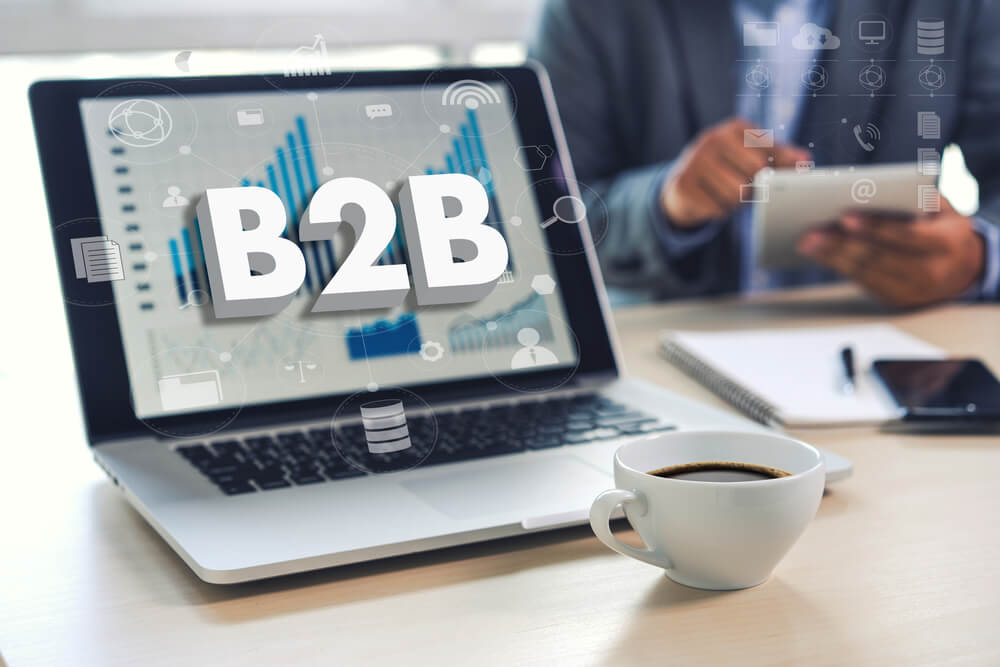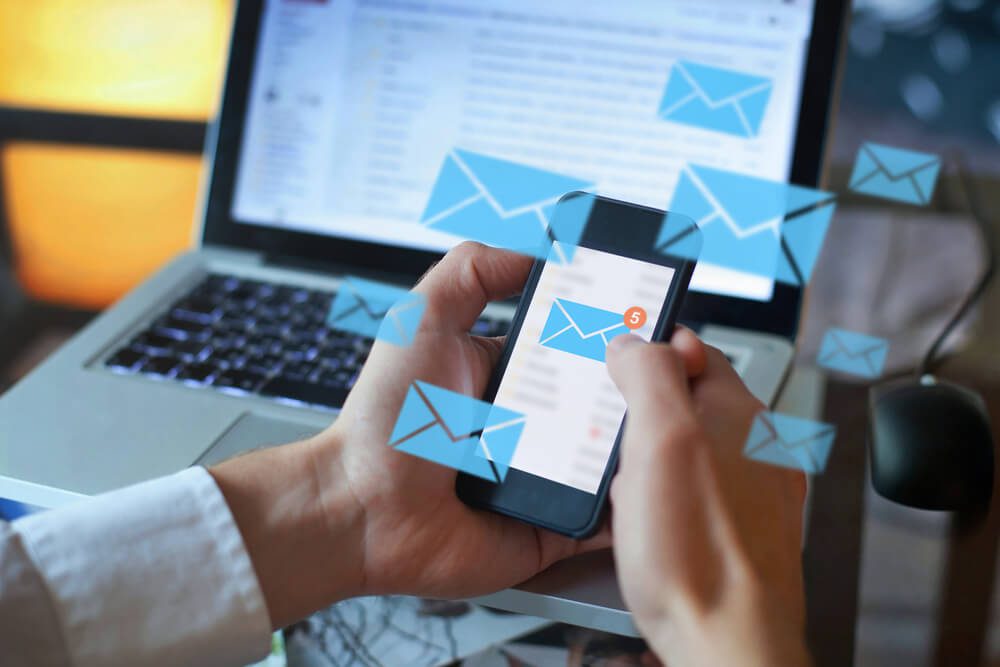
Common B2B Email Myths Busted! Tips To Improve Your Campaign
Myths are funny matters. They get repeated over and over again, often by less and less reliable sources, until an entire industry believes the myth because they heard somebody say it one time. Myths spring up around nearly every corner of the digital marketing world, but B2B email marketing seems especially susceptible.
As B2B email marketing experts, we have heard some whoppers. We are here to set the record straight. In this article, we dispel the following myths:
- B2B emails need to be strictly formal.
- More emails equals more leads.
- There is no “best time” to send emails.
- Email marketing is mainly about selling.
- Plain text emails are less effective.
- Email marketing ROI is hard to measure.
- B2B emails do not need personalization.
Ready to bust seven of the biggest B2B email marketing myths? Let’s go!
Tired of investing in Search Engine Optimization without getting any results? See how Digital Authority Partners turns that around!
Dispelling Myths and Enhancing Strategies
Email marketing is one of the highest-ROI marketing methods. You can spend a fortune gathering leads through pay-per-click or pay-per-impression advertising. You can also invest heavily in time and resources to lock down your SEO, all in an effort to get fresh leads.
But once you have those leads, it costs next to nothing to send an email reminding them that you exist and encouraging them to buy (or buy again).
If you can clinch your B2B email marketing strategy, you will have a booming business. Your conversion rate and customer lifetime value all skyrocket. Many successful businesses even accept the fact that they will lose money on the first sale or lead capture, knowing that they will more than recoup the loss on the back end through email follow-up.
If there is one digital marketing channel where you want to filter out the noise, overcome limiting beliefs, and drill down to the truth about what works, it is email marketing. Improving your B2B email campaigns can have an outsized effect on your long-term viability. Here are seven myths about B2B email marketing you might have heard, and that need to be dispelled. …
Myth 1: B2B Emails Need to Be Strictly Formal

When we audit the email archive of a new client, nine times out of ten they read like something that Thomas Jefferson might have written to John Adams — elevated, formal, sometimes so opaque with industry jargon as to be incomprehensible.
The authors of the emails seem to be under the impression that if a B2B email is not formal, they will seem unserious. The irony is that people don’t write formal letters anymore. The attempts to sound formal in emails come out stilted and unnatural.
Your B2B prospects are probably around the same age, have similar backgrounds, and use abbreviations and emojis in their text messages just like you. Moreover, people do business with people that they know, like, and trust. If you sound like a robot, they are less likely to trust you.
Bottom line, there is nothing wrong with taking a chatty, informal tone as long as it aligns with your brand. Use less jargon too. You may think that formal writing sounds smart, but actually less is more.
Myth 2: More Emails Equals More Leads
Some marketing influencers take a “more is more” approach, advising that you send two, even three marketing emails a day. Copywriting cost alone could become prohibitive.
Quality always trumps quantity when it comes to email marketing. The challenge of email is to not overwhelm the recipient with volume, but rather catching them at the right moment with the right message. Fewer emails, with attention paid to quality and sent at the right moment, are not only more effective but also more cost-effective.
Myth 3: There Is No “Best Time” to Send Emails
It is an email, right? It is just going to sit in the inbox until someone decides to open it. Does it really matter what day and time you send it?
Yes, actually, it matters a great deal. The majority of emails do not even get opened. Either they have no relevance to the reader (a content/targeting/offer problem), or the reader just never sees them.
A big reason an email does not get seen is that it gets sent at the wrong time. Most people only check their email a few times a day. This is especially true for work email, where the majority of your B2B leads live. If your email does not land shortly before the recipient checks emails, it might sit in the inbox for hours, unnoticed, until an influx of email pushes it to the second page.
Therefore, timing is important. A Hubspot study identified the 9am-12pm EST hour as having the highest open rate. Other studies have shown traditional lunchtimes or coffee break times to be productive. Weekends have been shown to be less effective, as have Mondays and Fridays.
But these are not hard-and-fast rules. Your audience could have a completely different ideal time window for email. Only by testing different sending times will you find out which ones work the best for you.
Myth 4: Email Marketing Is Mainly about Selling
Many marketing experts believe in pitching an offer with every email. There is merit to this. Why go to the trouble of catching someone at the moment when they are ready to buy and then not make the effort to sell them something?
Nevertheless, email marketing is not just about selling. It can also be about nurturing leads, offering value, and soliciting feedback or user data. It may be about obtaining referrals and asking for testimonials. If all you are doing with your marketing emails is selling, then you are missing out on valuable opportunities to strengthen your business overall.
Myth 5: Plain Text Emails Are Less Effective

Businesses often see the image-heavy emails that they get from the likes of Home Depot or Sephora and conclude that the only good marketing email is a design-heavy marketing email. After all, if your email is just text, no one will even know you are a business, right?
Actually, there are several reasons why plain text emails can be more effective than design-heavy emails. First, emails full of HTML images tend to get trapped by spam filters. Plain text tends to make it past the filters.
Secondly, an image-forward email is what businesses send. A plain text email is more like a message from a friend, someone the reader knows, likes, and trusts. By mirroring that behavior of presenting yourself as a person that the reader might come to like and enjoy doing business with, you are tapping into their more primal buying motivation, rather than just hoping they will be dazzled by the pretty colors.
Myth 6: Email Marketing ROI Is Hard to Measure
Many companies focus on more expensive marketing channels — search and social ads, SEO, etc. — because they think the ROI of email marketing is hard to measure. Their thinking is you cannot just go into your Gmail and Outlook and see how many people opened your email, can you? And if you make a sale, is it possible to know whether or not it came from an ad versus an email?
This way of thinking is actually completely wrong. The ROI of email marketing is actually very easy to measure. Email autoresponders not only help you automate and increase your email deliverability, but they also keep track of all your metrics — open, click-through, reply, unsubscribe rates, and more. Even if you do not use an autoresponder, simple analytical tools can do the same job.
As for which sales come from email, you can easily track this with tracking links, browser cookies, separate landing pages, and a host of other tools to determine exactly how many of your sales come from email and how much you spent to get those sales.
Myth 7: B2B Emails Do Not Need Personalization
One of the most insidious myths of B2B email marketing is that you do not need to personalize the emails. After all, you are selling to a business, not a person.
Again, this way of thinking is wrong. Businesses are made up of people. Just because you are selling business services does not mean that you are not talking to people. Treat them like people, and they are much more likely to come to like and trust you. Personalization of your marketing emails is always a best practice.
Summing Up
Buying into any one of these seven myths could drastically diminish the results that you are able to achieve from your B2B email marketing campaigns. Utilize the tips and best practices outlined in this article, including that email marketing is not just about selling, and more email is not necessarily better. Remember to personalize them for maximum effect and they do not need to be strictly formal. These are just some of the many myths about B2B email marketing.
Need help disentangling these and other assumptions from your B2B email marketing campaign? Contact Digital Authority Partners (DAP today to schedule a consultation. Our B2B email marketing team helps companies like yours successfully transcend these myths.
Want To Meet Our Expert Team?
Book a meeting directly here




